Dowels for aerated concrete: types, features and installation rules
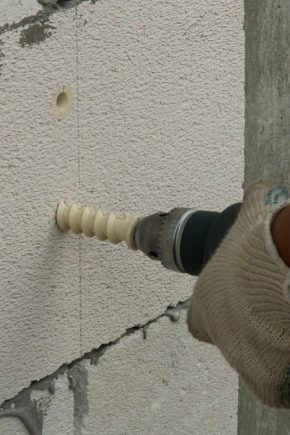
Today, for the construction of a wide variety of buildings, a material such as aerated concrete is often used. It has a special porous structure. Due to this characteristic, not all fasteners are suitable for this material. When working with aerated concrete, it is customary to use special dowels. It is worth considering in detail what types of such fasteners exist, and also find out how to install them in aerated concrete bases.
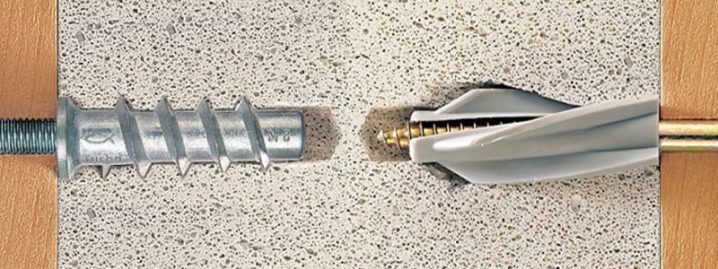
Characteristic
Aerated concrete is rightfully recognized as one of the most practical and affordable materials. It makes durable and strong houses, as well as reliable outbuildings. However, it should be borne in mind that this material has a cellular structure, faced with which you need to take into account many nuances. The main characteristic feature of such a material is its fragility and pliability. Porous blocks can be trimmed or trimmed away from them effortlessly. And also we must not forget that special fasteners are used for such a structure. Traditional fasteners tend to hold poorly in such bases, which makes the whole point of their use disappear.
For aerated concrete, special dowels should be used. The design of such parts is a spiral bushing, on the surface of which there are ribs. The latter elements become wider during the screwing in of a self-tapping screw or screw, due to which they firmly enter the loose aerated concrete surface. This simple, but effective device can easily withstand impressive loads. With the use of special dowels, the owners of the dwelling have the opportunity to hang heavy decorative objects of any size on the walls.
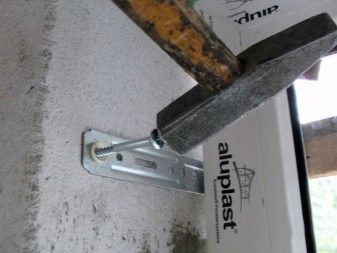
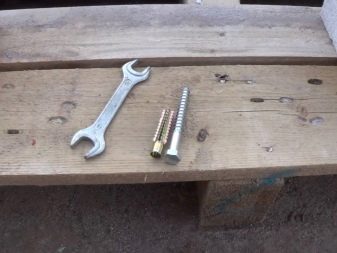
Modern manufacturers produce these types of dowels in two variations. They differ in design features.
- By the shape of the ribs of fixation. Such fasteners can be equipped with a classic helical spiral or have cone-shaped ribs. The edges of the latter may resemble spiral-like blades.
- By the installation method. The dowels are either screwed into the base or driven into it. It is considered to be the most reliable ones that are screwed in. It is recommended to contact the hammered fasteners if the aerated concrete floor is planned to be equipped with a collet.
Varieties
Today in stores you can find various options for dowels for porous materials. They mainly differ in the material from which they are made. One or another option of fasteners should be chosen based on what exactly is planned with its help to be installed on the aerated concrete surface.
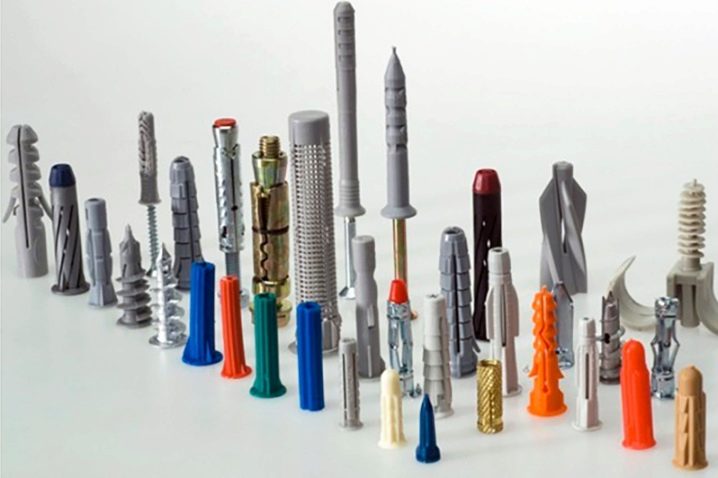
Metal
These types of mounts are most common. They are usually made of galvanized steel. Such elements can boast of fire safety, therefore they are very often installed in fire-hazardous spaces. Besides, metal dowels are great for the following work:
- for the installation of guides designed for the installation of sheets of gypsum board;
- for the installation of furniture and appliances that have an impressive weight;
- for fixing pipelines of any complexity (it can be a gas, sewer or water pipeline).
Fasteners made of galvanized steel must have a special stopper or collar in their design. Thanks to these details, the dowel will not turn or fall through, which very often happens when it comes to cellular bases. The main and only drawback of metal fasteners is that they are susceptible to the appearance of destructive rust. Galvanized dowels are the most expensive because they have many positive qualities. In addition, they can be used again if necessary.
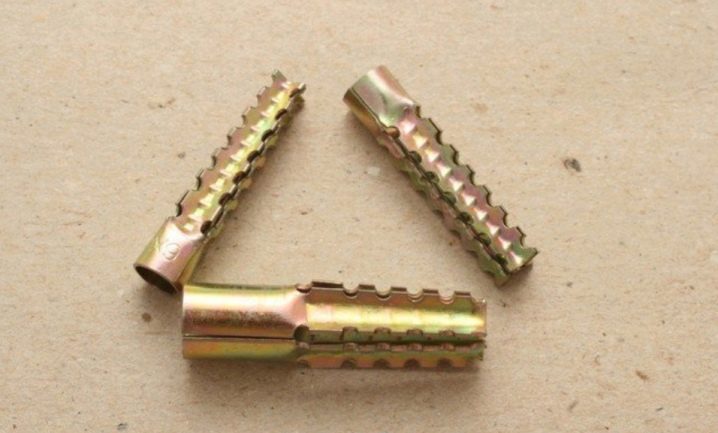
Plastic
Such types of dowels for aerated concrete are made of polypropylene and polyethylene. The good thing about plastic fasteners is that they don't corrode. Usually, plastic clips have special spiral-like ribs, which are responsible for the highest quality adhesion to the cellular base. A distinctive feature of these mounts is their environmental safety. In addition, they are not afraid of an aggressive external environment. Together with the low cost, these characteristics make plastic dowels simply irreplaceable elements when it comes to working with aerated concrete.
However, it should be borne in mind that such dowels cannot be used for facade work, which is explained by the fact that they cannot boast of resistance to low temperature values, therefore, with the onset of a cold winter, the plastic can simply burst.
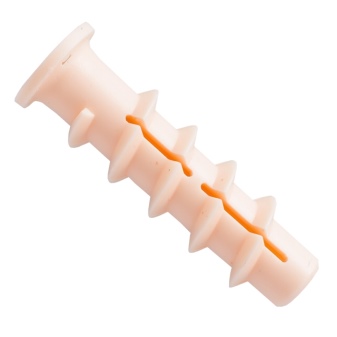
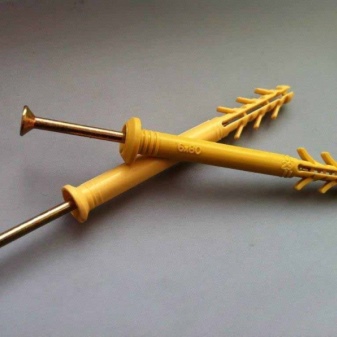
Nylon
Nylon dowels can also be classified as plastic. Such options for fasteners are good in that they also do not corrode. However, they are more wear-resistant than simple plastic parts - they can also be used for outdoor work. According to experts, nylon fasteners are much stronger and more durable than propylene or polyethylene copies. Consumers do not often spend money on such fasteners, since they are more expensive than other options. However, their characteristics and qualities fully justify the high price. Nylon types of dowels are used when carrying out works such as:
- installation of door and window openings;
- fixing mirrors and lighting devices - for such objects it is recommended to use dowels with a diameter of no more than 12 mm.
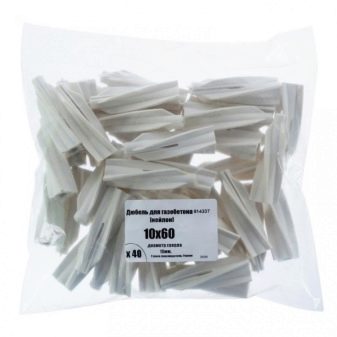
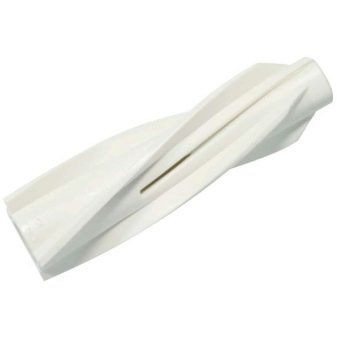
Chemical anchor
Separately, it is worth highlighting such fasteners as a chemical anchor. Such anchor bolts are relevant in cases when it is required to attach a certain object to the aerated concrete wall, which is distinguished by a large weight, which ordinary metal dowels simply cannot withstand. A chemical anchor works in the same way as a metal anchor dowel, but it is installed in a pre-made hole using a specialized adhesive. This method of fastening makes it possible to conscientiously fix large-volume elements.
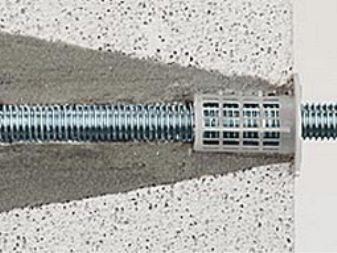
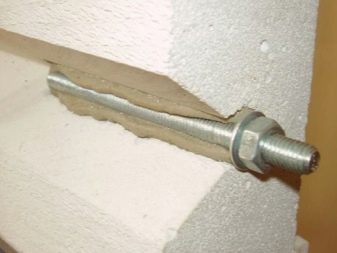
Dowels for aerated concrete also differ in their main application, so it is worth highlighting several of their varieties.
Universal
This type of dowel can be installed in any type of concrete surface. A distinctive feature of such fasteners is their structure of the spacer body. When the fastener is immersed in a solid base, it behaves like a simple expansion-type dowel. In a hollow or porous coating, these fasteners are rolled up into a special stop unit for tight fixation. These fasteners are installed differently from conventional fasteners.
In addition, the load-bearing capacity of the universal anchors is lower than that of the spacers. At the same time, the cost of such products is higher.
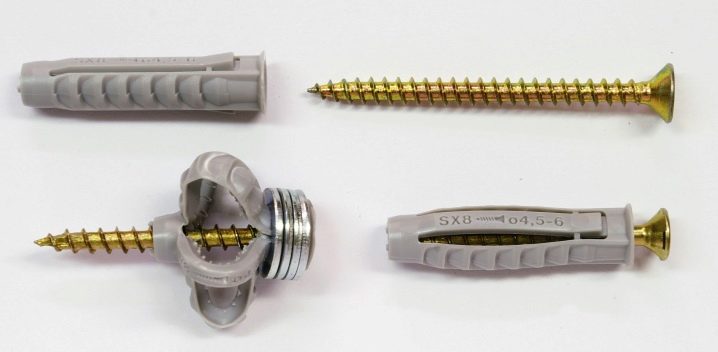
Gvozdevoy
There is a special dowel-nail, which is ideal for mass installation work. The sleeve of this attachment is as simple as possible - it has 2 spacers, and whiskers or teeth are not present at all. At the time of fastening, a nail is placed in such a dowel, and the screw part is not screwed in. For this reason, insert the sleeve to avoid twisting.Nail dowels are cheaper than other types of fasteners, but have a lower bearing capacity.
Installation of these mounts is quick and easy, as many experienced craftsmen say.
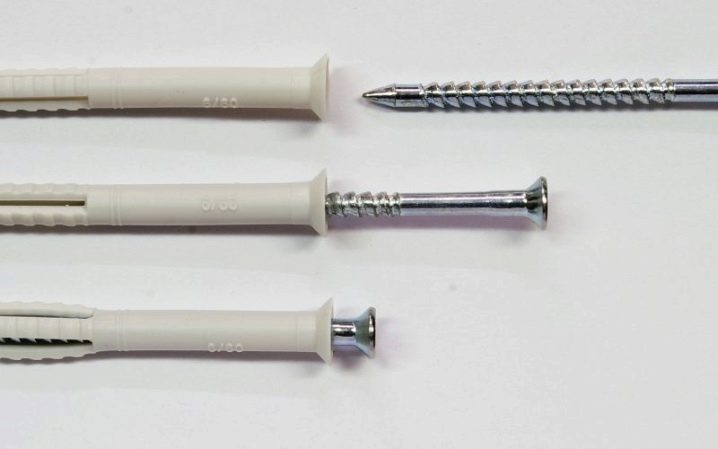
Frame
This mount is made of plastic or metal. The main distinguishing feature of these dowels is their "pancake-like" structure, thanks to which the fasteners make it possible to significantly reduce the load on the cellular block. Due to these features, the strength characteristics of the fasteners are improved.
Frame elements should be installed when installing doorways, as well as window blocks and guides.

Heat insulating
This mount is also installed in concrete bases. They can also be used when working with bricks. Heat-insulating dowels can also be installed in softer surfaces, since they are lightweight and designed for the installation of the lightest things - heat-insulating materials.
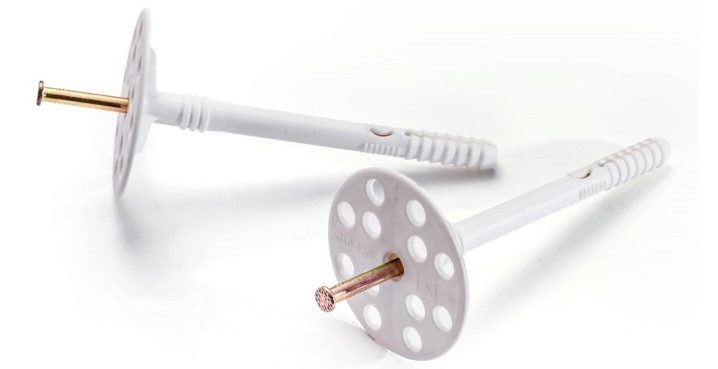
Which is better?
As you can see, there are plenty of different dowels designed to work with aerated concrete. To determine which one is the best, it is worth considering in more detail, what fasteners should be chosen for different cases, namely:
- when it comes to installing lamps or hanging mirrors, then the best options would be nylon mounts, the diameter of which does not exceed 12 mm;
- when installing the pipeline, you should choose metal dowels;
- for the installation of heavy pieces of furniture, it is recommended to buy specialized metal fasteners;
- when it comes to facade work, then one option is acceptable here - special facade fasteners made of plastic;
- when fixing window and door frames, frame types of dowels should be used;
- a compact photo or picture will hold a regular nail without any problems, which is permissible to fix without a dowel.
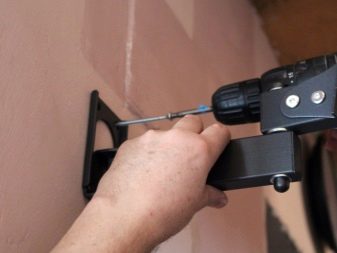
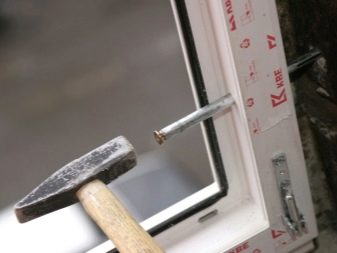
Dimensions (edit)
Fasteners suitable for aerated concrete foundations are available in different sizes. So, nylon specimens can have such parameters (in mm) as:
- 4x20;
- 5x25;
- 6x30;
- 8x40;
- 8x55;
- 10x50;
- 12x60;
- 14x70;
- 16x80.
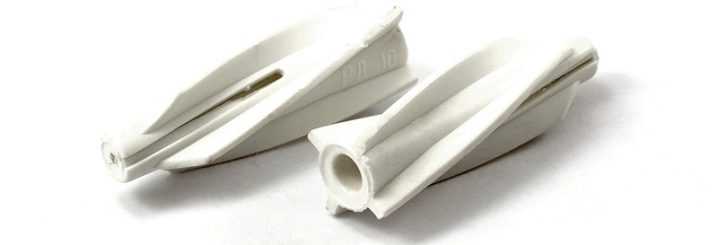
Galvanized dowels have such dimensions (in mm) as:
- 6x32;
- 6x36;
- 8x38;
- 8x50;
- 10x60.
Plastic options are manufactured with such parameters (in mm) as:
- 5x30;
- 6x35;
- 5x40;
- 6x25;
- 6x40;
- 8x40;
- 10x100;
- 12x100.
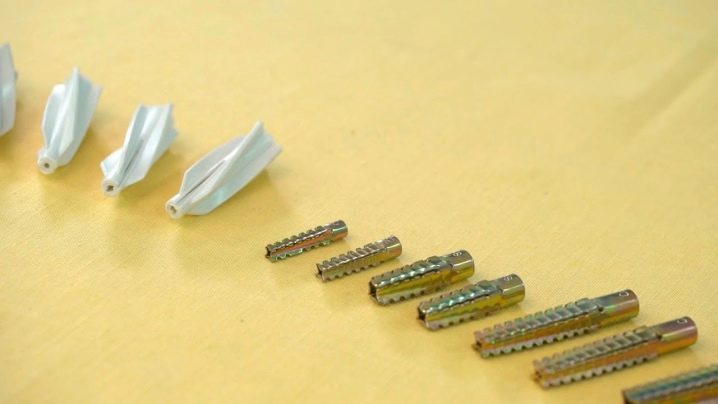
How to use?
The principle of installation of dowels is the same as for other types of fasteners. You need to act in the following order:
- first you need to prepare holes for the dowel, which should be smaller than the diameter of the attachment; for example, for fasteners of 8 mm, you will need to use a 7 mm drill;
- if you take a tool such as a punch, then you need to turn off the impact mode in it, of course, it is advisable to use a drill in this case, since it is more effective;
- plastic fasteners must be carefully screwed in using a screwdriver; if metal parts are used, then they should be driven into the bore hole with a hammer;
- when doing work, it is imperative to make sure that the products do not touch or are crooked;
- when the cuff is installed all the way, you can proceed to screwing a self-tapping screw or a universal-type bolt;
- it is necessary to screw in the self-tapping screw with a screwdriver, adhering to the required depth.
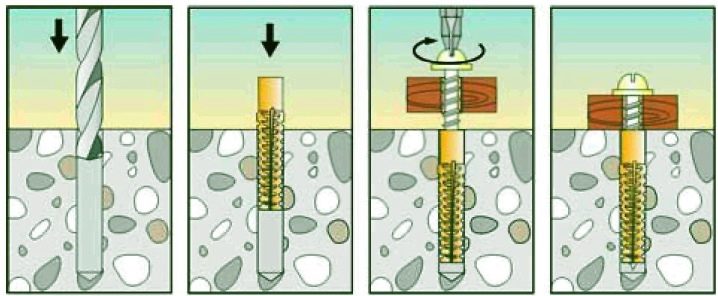
As you can see, fixing the dowels for the gas block is not at all difficult. The main thing is to work carefully and make sure that all parts are firmly "sitting" in the wall without swaying.
Tips & Tricks
When installing dowels in the gas block, you cannot use a screwdriver, since this device operates on electricity, which makes it more difficult to control it. Such a device can break the thread by twisting the screw. When making a hole for dowels in the gas block, it is important to take into account that they should not be larger than their diameter. Otherwise, the fasteners simply will not hold securely in the base. The hole depth should be slightly more than the dowel length parameter.The tip of the screw must leave the dowel for maximum reliability.
Many people, having become acquainted with dowels, begin to use them at any opportunity. However, experts do not advise turning to too powerful mounts if you plan to hang hooks, pictures and other little things. For such purposes, simple plastic fasteners are more suitable, the size of which is about 8 mm.
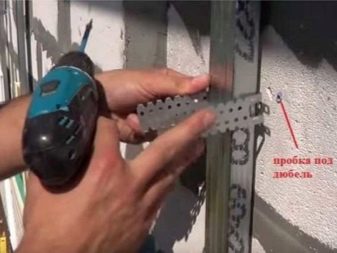
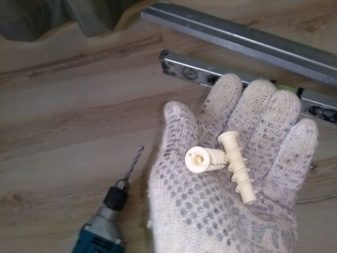
If you install such elements in accordance with all the rules, then they will be able to withstand more serious weights. You should not skimp on the purchase of high-quality fasteners, especially if you want to attach heavy objects of large sizes to aerated concrete walls.
About fasteners for aerated concrete - nylon dowel and metal dowel (crocodile), see the next video.













The comment was sent successfully.